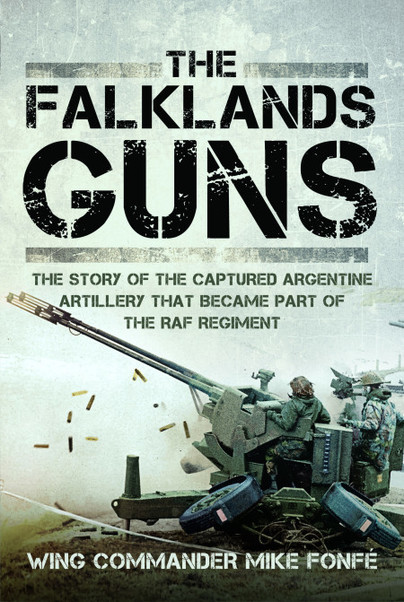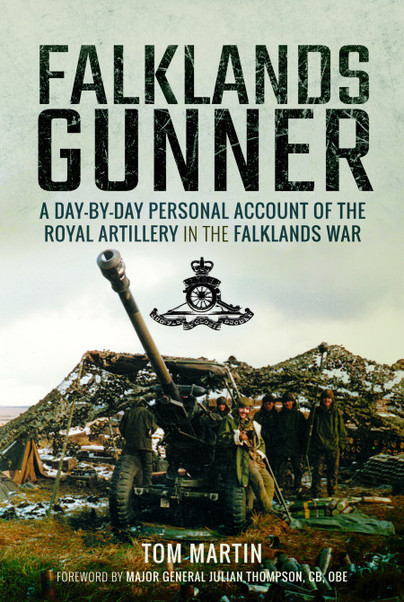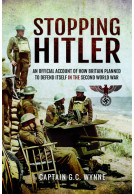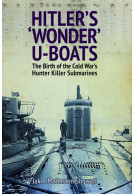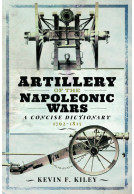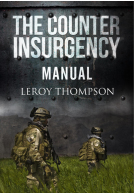The Falklands Guns (Hardback)
The Story of the Captured Argentine Artillery that Became Part of the RAF Regiment

Pages: 288
Illustrations: 32 black and white illustrations
ISBN: 9781526774422
Published: 13th March 2023
(click here for international delivery rates)
Need a currency converter? Check XE.com for live rates
| Other formats available - Buy the Hardback and get the eBook for £1.99! | Price |
|---|---|
| The Falklands Guns ePub (62.8 MB) Add to Basket | £6.99 |
The Skyguard radar-directed Oerlikon twin 35mm anti-aircraft guns had a major impact on the British air campaign during the Falklands Conflict of 1982. General Menéndez, transient Argentine Governor of Las Islas Malvinas, stated ‘The anti-aircraft gunners were the only Argentine forces on the Malvinas not to be beaten directly by the British and can take pride in being the first and the last to fire on the enemy.’
Following their surrender, these recently purchased guns were recognised for their military value to the RAF by a young squadron leader in the British Ministry of Defence who used his initiative to staff an entire new squadron into existence, the captured equipment uniquely to be manned by male and female part-time personnel fulfilling all combat roles equally. Fonfe´ was given first command of the new unit, No.2729 Squadron, and awarded an MBE.
This unusual story of the Falkland Guns begins with an account of the anti-aircraft battles of both the Argentinians and the British, drawing on captured enemy documents, followed by how Fonfe´ staffed the MoD process to raise the new unit, before describing the challenges and fun of commanding his own creation at breakneck speed to achieve Operational Declaration to NATO in record time. Later, on promotion to wing commander back to the MoD, now as the policy staff officer for all RAF ground-based AA weapons, he launched the formation of a second squadron to meet the RAF needs at the height of the Cold War.
Finally, forty years on, while the guns are now silent in military museums, the Skyguard radars continue in RAF service in the 2020s, giving NATO aircrews anti-aircraft fire avoidance training, given the continuing service of the weapon in so many potentially hostile nations.
The 40th Anniversary of the Falklands War in 2022 has prompted the release of a number of accounts from those who served in or had connections with the campaign. With the passing of time, it has become clearer to those watching in 1982, that while the outcome then appeared inevitable, it has become more apparent that it was “a near-run thing”. The extreme vulnerability of an expeditionary force dependent on extended supply lines and with limited air capability for both air defence against an aggressor flying land-based aircraft from the Argentinian mainland was considered by some analysts to have been insurmountable. The British air assets were also vital for offensive strikes on the Argentinian airfields and military concentrations on the Falkland Islands. While much as been said on the naval, air and military aspects of the campaign, Mike Fonfé, a retired Royal Air Force Regiment officer and Ground-Based Air Defence (GBAD) specialist, has written a detailed and fascinating account of the air campaign not only from the point of view of the British air component but also using documentation and accounts from the Argentinian point of view with descriptions of the deployments and actions of their GBAD assets.
Dr Nigel Warwick, Corps Historian RAF Regiment
Going under many names and acronyms over the years since air defence was first used in the early years of the Great War, anti-aircraft defence, low-level air defence, short-range air defence or GBAD, is considered a useful, but only as a lesser adjunct to air defence by aircraft. What Fonfé presents is a detailed analysis of GBAD from the point of view, not only of the pilots and their missions on both sides, but their encounters with GBAD. The book particularly presents a detailed account of the deployments and capabilities of the Argentine anti-aircraft weaponry as only a fully trained and expert GBAD officer from the RAF Regiment could convey.
From the First and Second World Wars to the present day, the complex and detailed techniques and tactics for establishing GBAD is often viewed simply as a point and shoot operation, in the event that the aggressor flies with range of one’s guns or missiles. Fonfé has, however, conveyed the intricacies of this trade and this book serves as essential reading to those wanting to understand it more deeply.
The book, however, is more than a telling of the story of the Falklands campaign. It is divided into four parts with a description of the invasion by the Argentine forces and the retaking of the Islands with a focus on the air-ground battle. While Fonfé was not involved directly in the campaign, he does recount the role that the RAF Regiment’s 63 Squadron, equipped with its Rapiers, played, and the establishment of regular roulement of RAF Regiment Rapier squadrons to provide GBAD for RAF assets on the Islands following the end of the campaign.
Intriguingly, the book then segues into an account of the recovery of the highly sophisticated Argentinian Sky-Guard Oerlikon guns and radars from the Islands battlefields and their return to the UK. It was these guns that Fonfé set his mind to deploying with the RAF Regiment. As always, the MOD budget was under severe manpower and financial constraints and the establishment of a regular RAF Regiment squadron could not be contemplated, however, an Auxiliary squadron could be formed.
The author describes how he set about developing the case for the Squadron, obtained permissions from various MOD command levels, whether military or financial, and developed links with the Rheinmetall Oerlikon Company, which allowed the guns to be put in a sustainable operating state. It is a fascinating story of how a bureaucracy can be made to work if the right connections are established, albeit with a certain degree of guile and luck. The account has lessons on how a junior staff officer at MOD in Whitehall successfully navigated the system as guns and ammunition moved from the South Atlantic to the UK and details his strenuous efforts to acquire the ‘booty’ and to draw the guns together to establish the squadron. These were ‘recaptured’ in some cases from MOD research or training establishments or re-possessed from Museums reluctant to part with their new exhibit or an RAF station using one as a gate guard. He thus ensured that multi-million-pound functional GBAD equipment was used for its intended role and not left to sit as a museum exhibit before its time.
First one, and eventually two, fully equipped Reserve Forces units within the Royal Auxiliary Air Force Regiment would operate the guns. The first 2729 (City of Lincoln) Squadron, RAuxAF Regt, would operate these sophisticated and technically complex weapons and provide NATO-mandated GBAD to RAF Waddington in Lincolnshire. The Squadron that Fonfé himself would be given to command. Of further interest, this squadron pioneered the full employment of women in all combat appointments, 40 years ahead of regular employment in combat roles. The Sky-Guard Oerlikons served until 1993, when with end of the Cold War, the Squadrons were disbanded, and the guns retired.
During the 2000s, with further contraction of the Armed Forces, the RAF Regiment lost its entire GBAD capability for the first time since 1942, with the withdrawal of Rapier and the consequent loss of expertise of the RAF Regiment officers and gunners specialising in the anti-aircraft defence of RAF airfields against a sophisticated nation-state aggressor. What this book presents is not only the story of GBAD in the Falklands campaign but a reminder of the vital importance of a trained GBAD force for the RAF and what has been lost in the decisions made in the past decades.
There is a section of archive photos providing some illustration of the different stages of this story and I found it all interesting reading.
Military Model Scene
Read the Full Review Here
This extraordinarily true story tells how the author, a young professional anti-aircraft specialist staff officer, spotted an opportunity to use state-of-the-art, virtually new Oerlikon twin 35mm AA guns which had been captured in good condition, along with their all-important Skyguard radars, in the Falklands campaign and fill an important gap in UK’s capability. However, UKMOD had, relatively recently, firmly rejected guns in favour of missiles and did not want to re - open the debate, despite other conflicts demonstrating the attraction of having both systems in the inventory. But how would these new units be manned? There were serious manpower constraints capping recruitment and competing inter -service demands.
Tim Jones, Former Principal Future Policy Staff Officer for the RAF Regiment in the MoD
Mike Fonfe again demonstrated great imagination, determination and much nimble staffwork by proposing that the recently rejuvenated RAF Reserve, the Royal Auxiliary Air Force Regiment should provide both men and women (40 years ahead of others!) to cost effectively crew his front line systems. It didn’t take long for his compelling arguments to sway the day and the game was on! Not surprisingly Mike was awarded an MBE and later promoted. Meanwhile, he scooped the immediate prize of commanding the first squadron of his creation.
This is an excellent account of the acquisition of the Argentinian 35mm Oerlikon anti-aircraft guns and Skyguard radars after the Falklands War. The first half of the book gives a fascinating account of the Air Defence and Air war from both the UK and Argentinian positions and details aspects of the war that I have not read about before and gives a detailed account of what both sides were faced with in prosecuting attacks both in air to air and air to ground and the effectiveness of the anti-aircraft defence on both sides.
Trevor Howie
The second half of the book deals with Mike’s realisation that the abandoned Oerlikon and Skyguard systems, some of which were languishing in the Falklands and some returned to the UK as war booty, could be put to use in the defence of UK Airbases. Mike was a junior staff officer in the MOD when he had the idea and thanks to his 4 hour commute to work each day, he was able to flesh out a tentative plan to use these assets to defend UK airfields.
It is in this half of the book that Mike achieves the impossible. He makes staff work sound incredibly exciting. I have never in my life ever read a more riveting account of staff work; it is an exceptional piece of writing detailing the two years that it took from his back-of-a-fag-packet idea to MOD approval for the formation of a completely new RAuxAF Regiment squadron and eventually a second squadron and a Wing Headquarters to command both: a 30 million pound Sterling unit for the cost of 3 million. It was a remarkable achievement for which he was awarded the MBE.
Incidentally my sister-in-law, Tessa, was one of the first 10 recruits to the first squadron as Mike employed women in combat roles decades ahead of when they were formally introduced, while Tim Jones, FRAeS
Paddy Johnson, a good mate of mine, was instrumental in bringing the Sqn into being. If you like reading about unusual military organisations then this is definitely for you.
The Falklands War was a strange time for everyone involved. Apart from being totally unexpected for almost all the participants; we were fighting a nation that we had previously regarded as friendly. Within this rather odd background, the tale of the Falkland’s Guns is a curiously fitting series of events that demonstrates a high order of ingenuity and determination on the part of the author and his helpers. In essence, the virtually brand new Skyguard radar linked to the 35mm Oerlikon ant-aircraft gun systems that the Argentinians brought to the Islands were salvaged and transported to the UK to form the basis for 2 British military units, which were ultimately declared to NATO. This book describes how this happened in a highly readable manner. My part in all this was to recover some of the guns whilst stationed on the Islands and later, as the MOD staff officer responsible for Ground Based Air Defence (GBAD) for the RAF, I got to know these weapons well.
Air Vice-Marshal Richard Moore MBE RAF (Retd), Former Commandant General of the RAF Regiment
The first part of the book deals with the conflict, focussing on the Argentine GBAD defences and the efforts of the British Harrier pilots to successfully attack defended targets. The individual battles between air and ground are well described, as is the ability of the defences to limit the pilot’s freedom of action and the significant damage that they inflicted on the Harrier Force. This proved the effectiveness of these systems against what was arguably one of the best fighter ground attack forces in the world. In fact, such was their effectiveness that extraordinary efforts were made by the British to destroy them, including launching anti-radar sorties from the Ascension Island requiring a 7000-mile round trip. It is apparent that very similar factors are still affecting air operations against GBAD defended environments, with Ukraine being the current prime example. The deduction that the author made from this activity was that these weapons and their associated sensor systems were worth close examination. He was well placed to carry out this examination, as he worked in the UK Ministry of Defence (MOD) in the Air Staff with responsibility for air defence.
Apart from working in the UKMOD, he was also a member of the Royal Air Force Regiment, which was at that time tasked with providing GBAD defence for the Royal Air Force (RAF). This gave him excellent access to specialist personnel on the Islands who had the expertise to identify, assess and recover the equipment he identified as worth saving. Incidentally, in the process they were able to deter the many trophy hunters intent on recovering guns for ‘gate guardians’ and research purposes. The combination of UKMOD authority and the determined cohort of RAF Regiment Skyguard/Oerlikon hunters on the ground, remarkably, enabled the recovery of virtually all of this equipment.
The story then moves to the UK where it was quickly realised that much of this excellent equipment was still useable but there was no money in the RAF’s budget to bring it into service, despite their being an acknowledged shortage of UK GBAD. It is at this stage that the author demonstrates creativity and downright cunning, linked to his inimitable character in the face of the feared UKMOD bureaucracy and procurement process. Unless you have worked within this process it is difficult to grasp the magnitude of what he was attempting. There was simply no money, no manpower and not much interest at first within the senior staffs. Indeed, he was ordered to pursue the idea in his own time. He changed this by such means as selling captured 35mm ammunition back to the British manufacturers to obtain funds to enable a proper assessment of the equipment and provide cost estimates to bring it into service. In addition, he found means to shorten what was often a multi-year procurement and contracting activity into a few months. Most particularly, his efforts captured the imagination of the MOD staff all levels and he was able to convince the senior staffs that his proposal would provide excellent defences for RAF airfields at a very low price. However, there was still no manpower; he overcame this obstacle by using auxiliary personnel, which brought its own challenges.
It also needs to be mentioned that without the unstinting support of the Rheinmetall Oerlikon Company and the British Manufacturing and Research Company (BMARC), which is now defunct, life would have been much more difficult for the author.
The tale now moves to RAF Waddington and the formation of what would eventually become 2 Royal Auxiliary Air Force units declared to NATO for the defence of UK airfields. Those concerned with the training of military auxiliary personnel could do worse than to pay careful attention to how the author tackled the problem of highly technical and potentially dangerous training with very limited trainee man hours. Essentially, he ignored convention and trained his auxiliaries in their technical war fighting roles first and the associated miliary skills second. Moreover, he introduced women in in all roles and initiated mixed gun crews, apparently greatly improving crew field hygiene in the process! This approach proved highly successful and, whilst not entirely new, it was very ground breaking at the time. The effort required to form two complex unts from scratch with very limited manpower is exceptional and the fact that success was achieved can only be described as extraordinary.
So, this a tale of imagining how captured radar-directed guns could immediately benefit the British defence effort and the practical realisation of that imagination. It ranges from battle and destruction on the Falkland Islands, through recovery of equipment that proved very difficult for British pilots to negate, to the eventual rebirth of the guns as part of a major RAF unit. It is a genuinely extraordinary tale of inventiveness, resolve and dedication on the part of many but most especially Mike Fonfé.
About Wg Cdr Mike Fonfé
Wing Commander MICHAEL D.C. FONFÉ MBE, RAF (Retd.) was born in Africa in 1945. He married Christina King in 1967 and is the proud father of four children and ten grandchildren. He was awarded the Sword of Honour when he graduated from the Royal Air Force College Cranwell. He was also Instructor-in-Gunnery graduate of Royal School of Artillery. Fonfé served for thirty-six years in the RAF Regiment as infantryman, parachutist, anti-aircraft gunner, guided missile specialist, senior staff officer and adjudicator. Mike Fonfé undertook tours in Aden, Bahrein, Malta, Belize, Canada, Germany, New Mexico and South Africa. He retired in 2000 to build an African thatched hut in his English country garden. Mike now divides time between family members in the UK, Germany and Australia. He is also the first Gold Medal recipient as well as Honorary Life Member of the Oerlikon Alumni, Switzerland.
Falklands Gunner A Day-by-Day Personal Account of the Royal Artillery in the Falklands War (Hardback)
The Royal Artillery played a vital, though often forgotten, part in the British armed forces’ successful operation to re-capture of the Falkland Islands in 1982. However, the actions of the artillery were recorded by one young officer in a journal which he kept before, during and after the conflict. Second Lieutenant Tom Martin was a Command Post Officer with 29 (Corunna) Field Battery RA which deployed to the South Atlantic in 1982 as part of the Task Force dispatched to retake the Falklands. With its six 105mm Light Guns making the journey on the MV Europic Ferry, the Battery sailed south…
By Tom Martin, Julian ThompsonClick here to buy both titles for £35.00







